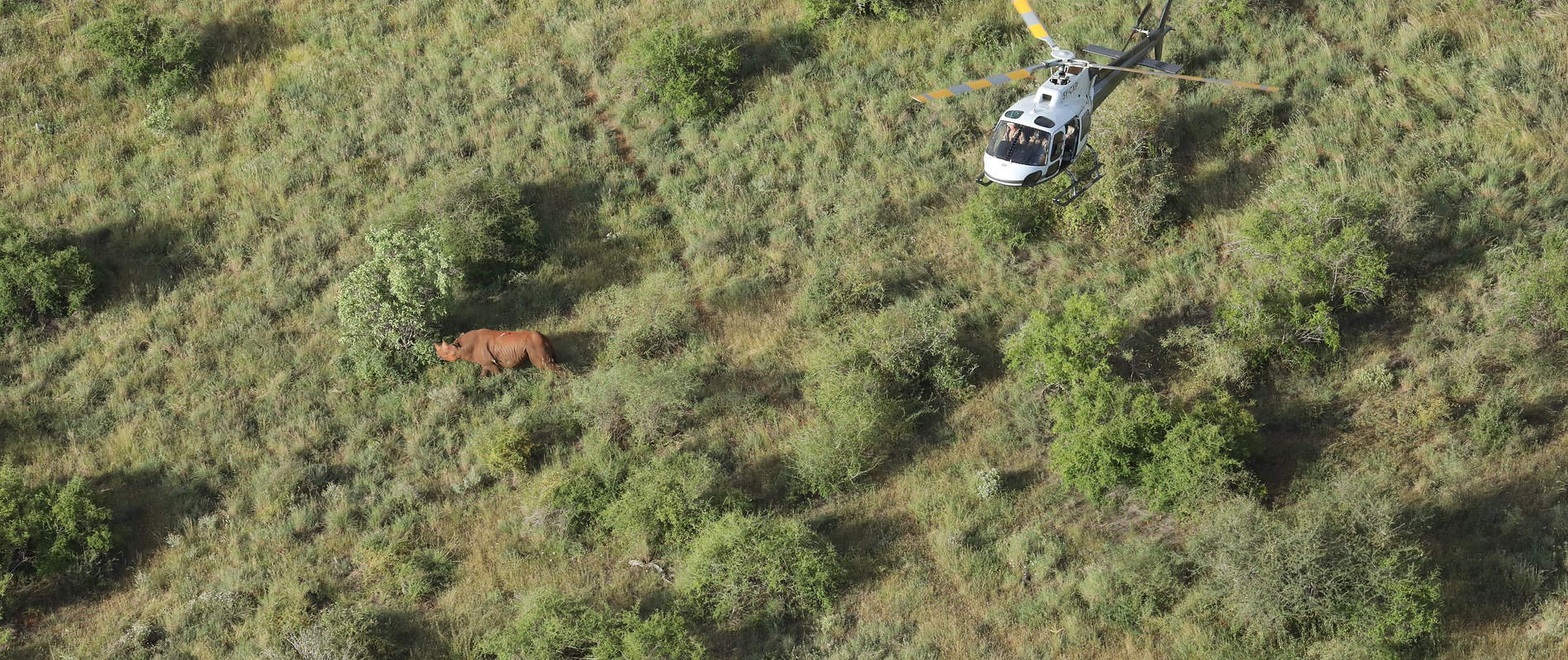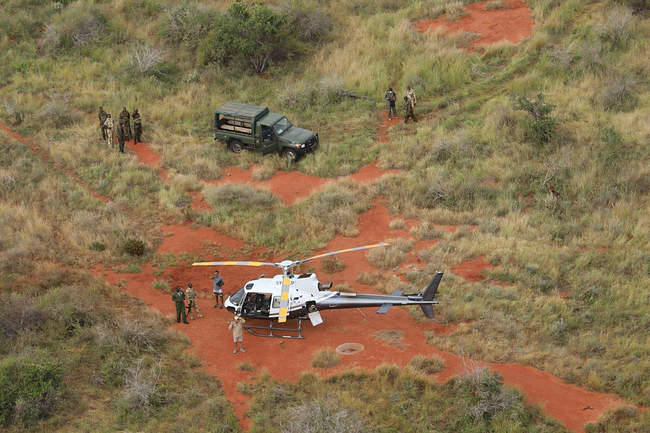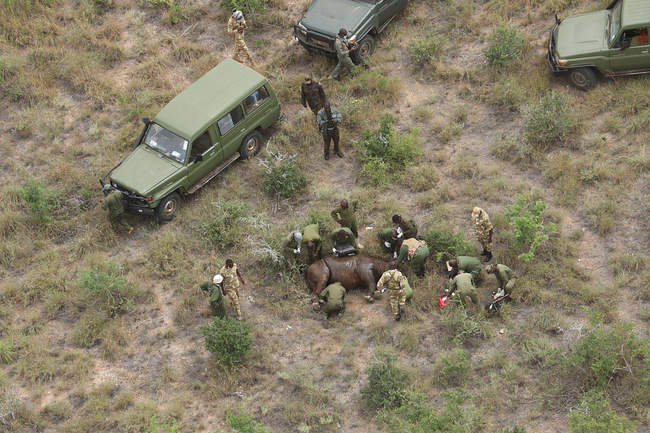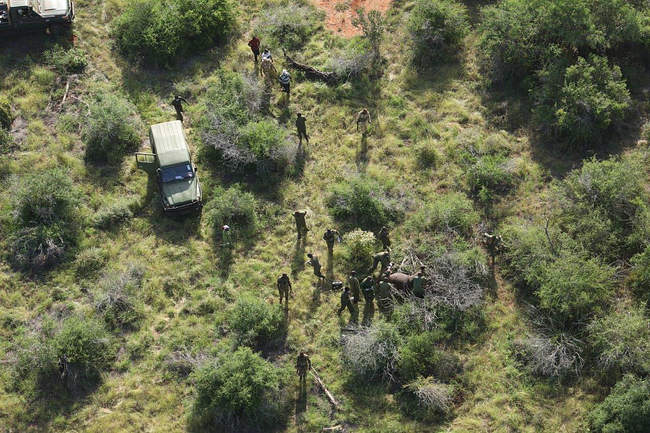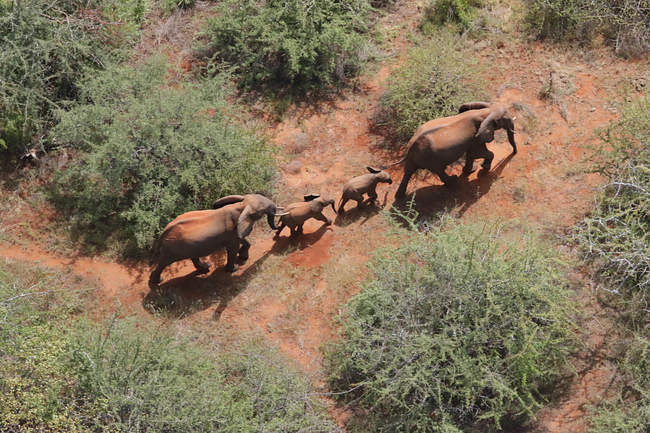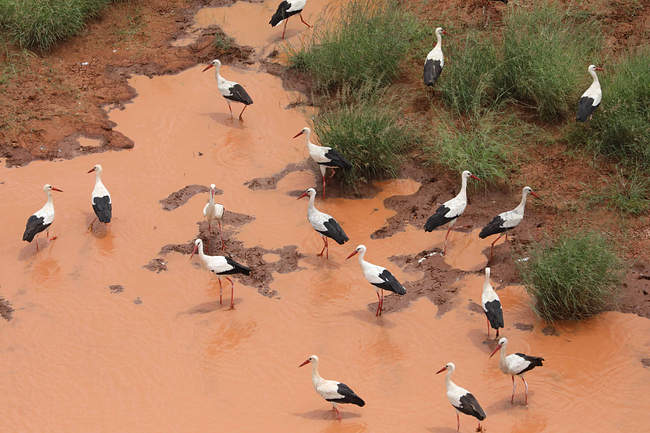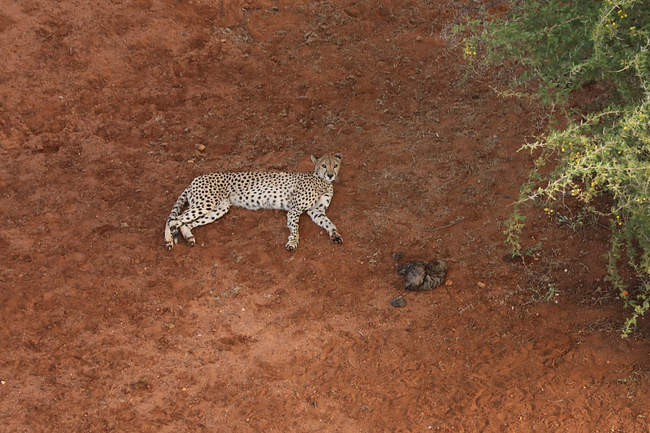A staggering 20 human-elephant conflict cases were responded to by the SWT helicopter in January. The majority of these cases occurred in the communities along the Mtito River in Tsavo East.
This has been a hotspot for human-elephant conflict in the past but conditions this year have brought large numbers of elephants into the area, with several groups of bulls choosing to remain permanently.
Two veterinary cases were attended to in January with helicopter assistance. One case was an elephant on Rukinga Ranch that had been spotted by a Wildlife Works pilot with a terrible snare wound. The second veterinary case was a repeat patient in the Mwaluganje Elephant Sanctuary, which the Sheldrick Trust also supports.
Both fixed wing aircrafts and helicopter were also instrumental in support of a rhino ear notching operation in Tsavo East towards the end of the month
Livestock activity essentially remained unchanged since December, with small incursions identified during aerial recces in areas of both Tsavo East and West and responded to by KWS. Charcoal activity was also minimal in January with only a small number of charcoal kilns identified, mostly in South Kitui National Reserve.
Continuing a downward trend, poaching activity was minimal in January. Three cooking fires were spotted during a helicopter patrol, two of which were active. The helicopter also responded to a callout from one of the ground teams that found a poacher's hideout in the Northern Sector and one poacher was successfully captured. One elephant carcass was discovered in January, along the banks of the Galana River; however, its tusks were intact and there was no evidence of poaching, leading to the assumption that it died of natural causes.

Sadly, our helicopter was also called to assist in the search for survivors after a Kenya Defence Force aircraft crashed into Irima Hill.
While locusts have been plaguing the north of Kenya for almost a year, Tsavo has been largely spared; however, there are an increasing number of desert locust swarms being observed. There were a number of interesting sightings in January, including the elusive caracal, as well as more commonly sighted leopard and cheetah. Several sightings of wild dog were also made.
